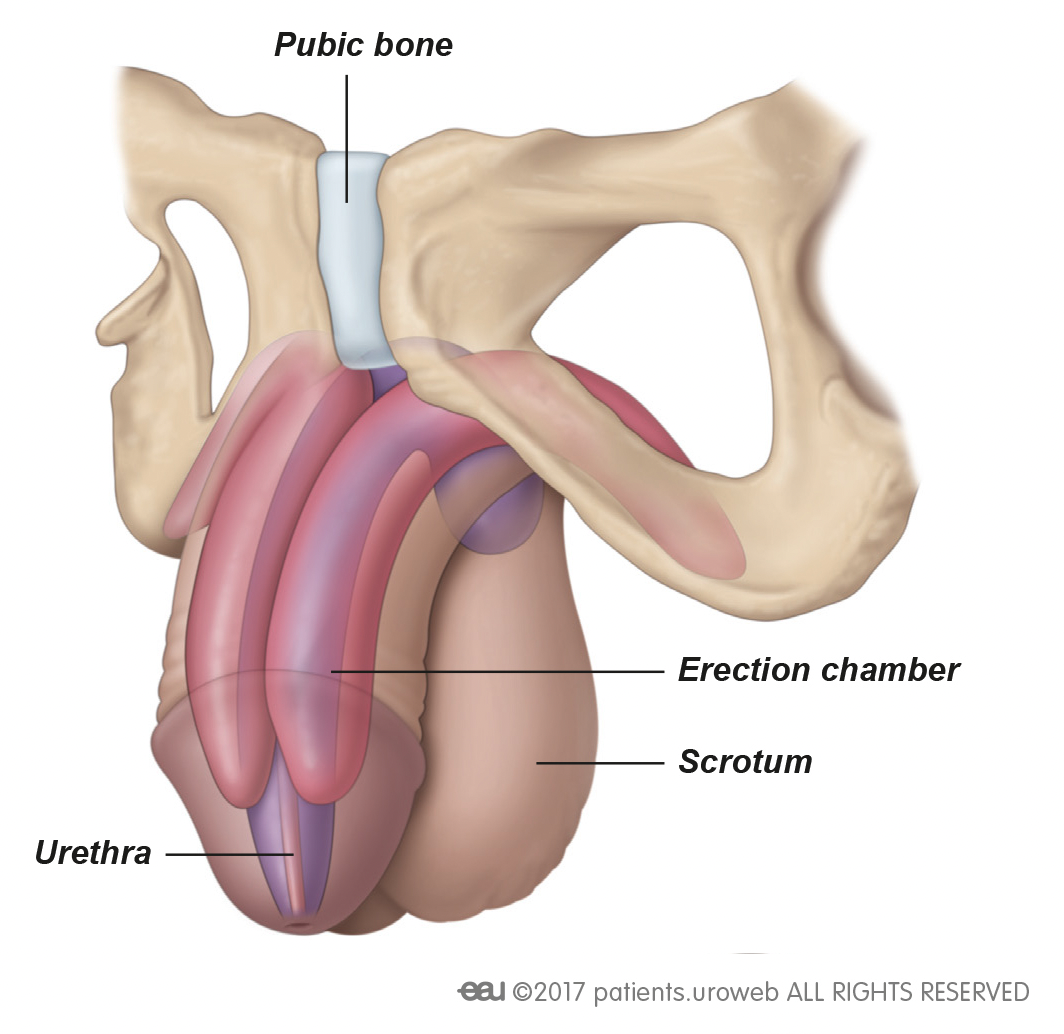Erectile disorders
What are erectile disorders?
Erectile disorders are a group of penile disorders which affect the way a man’s erect penis functions, typically by altering its shape in a way that makes sex difficult, painful, or impossible. Though a slight curve to the right or left is normal in an erect penis, more significant ones may impact a man’s lifestyle to a degree that prompts medical attention
Sandhurst Urology offers diagnosis, management, and medical intervention for erectile disorders from our clinic in Bendigo. To book an appointment, please ask your GP for a referral.

Symptoms of erectile disorders
As erectile disorders include several distinct conditions, the exact symptoms can vary significantly and often worsen gradually. Though most men with erectile disorders report erectile dysfunction before noticing other symptoms, such is not always the case and erectile disorders do not always cause erectile dysfunction. Other symptoms can include:
- An unusually curved penis when erect (particularly curving upwards)
- Decreased penile length and/or girth
- A patch of thick skin on the shaft of the penis (usually bending or kinking the penis in that direction)
- A tight band of tissue which pinches part of the shaft inward and gives the penis an hourglass shape
- Pain in the penis during erections (typically not with a flaccid penis)
- Bruising or discoloration on the penile skin
- Difficulty urinating
- Sexual difficulty due to the penis’s shape
- Soft erections

Remember that every man’s experience with their erectile disorder is individual – you may not experience every symptom and may experience slightly different symptoms to those specified. For further advice and diagnosis, book an appointment at Sandhurst Urology.
How erectile disorders are diagnosed
In most cases, your doctor can diagnose an erectile disorder with a physical exam alone. They may visually inspect the penis for obvious lumps or unusual shapes, and may measure the penis to identify and locate scar tissue. If they suspect an erectile disorder, they may supplement the exam with one or more of the following tests to gain clearer insights:
- Ultrasound – using sound waves, this test creates an image of the penis’s soft structures. Your doctor can check this for signs of scar tissue or other abnormalities. Dynamic ultrasounds can also check for calcium build-ups that inhibit function.
- Corpus cavernosa injections – your doctor may inject a medication into the penis which makes it temporarily erect. This allows them to inspect the deformity and take pictures for further study if needed.
- Skin biopsy – uncommonly, your doctor may remove a skin sample from the penis and send it to a pathology lab for testing. This type of test may help identify skin conditions that impact the penis’s shape.
- Photography – You may be asked to take a photograph of your erect penis to help your specialist identify abnormalities.
Preventing erectile disorders
Erectile function is reliant upon an intact nerve supply, good blood flow and a host of other factors. Avoiding smoking and maintaining a healthy “heart” diet is protective for erectile function.
The primary contributor to erectile disorders is a previous injury to the penis. Many disorders, including Peyronie’s disease, generally result from incorrect wound healing. As a result, preventing injury to the penis is the most effective measure for preventing erectile disorders. This may include wearing correct protective gear during sports and wearing clothing which prevents scratches on the skin. Significant lesions on the penis should see expert treatment to avoid the risk of complications.
Major injuries to the penis (such as trauma from a vehicle accident) are particularly likely to cause an erectile disorder. Though rare, significant injuries such as penile fractures may also result from vigorous sex, such as if the penis bends during penetration or is excessively pressured by a partner’s pubic bone. Men who experience a snapping sound, intense pain, and spontaneous loss of erection during sex should seek medical attention immediately to prevent future erectile disorders.
As with any condition, always seek medical guidance to prevent and treat your erectile disorder effectively. Ask your GP for a referral to Sandhurst Urology for individualised advice.
Treatments for erectile disorders
Erectile disorder treatments vary according to the condition’s precise nature and the physical needs or discomfort of the man affected. Approaches recommended by your doctor may include:
- Watchful waiting – erectile disorders which do not currently cause significant problems may not require immediate treatment. Your doctor may recommend monitoring the condition with regular check-ups to permit immediate action if a bigger concern develops.
- Penile injections – a qualified urologist can inject medications directly into the penis which help the body break down certain scar tissues or fight inflammation. These are often recommended for men with early Peyronie’s disease who do not yet wish to undergo surgery.
- Medications – your urologist can prescribe drugs which work to heal wounds, reduce swelling, or otherwise help the penis heal from its deformity. These medications sometimes carry side effects and are not suitable for all men.
- Penile exercises – bending or stretching the penis in particular ways may help correct some forms of curvature. Your doctor can recommend specific exercises, generally in conjunction with another medical therapy.
- Penile traction therapy – this treatment involves using a specialised device several times a day to gently stretch the penis and shape it in a particular direction, usually opposite to the curve. Your doctor can recommend a specific device and teach you how to use it.
Medical interventions for erectile disorders
Surgery for erectile disorders carry a risk of causing erectile dysfunction and some other sexual problems, so they are typically performed only after all other treatments have failed.
Treatments offered through Sandhurst Urology’s Bendigo clinic include:
- Graft repair surgery – generally used to treat Peyronie’s disease that causes significant penile curvature, this procedure involves making one or more incisions in the penile scar tissue which causes the curve. Without the restrictive tissue, the penis can straighten as normal. A graft placed at the surgical site helps maintain the new position and prevent the disease from returning. More severe cases may also include vein grafts to promote better blood flow.
- Plication of the penis – this procedure corrects the bend by tightening the skin on the opposite side of the curve, reducing the angle. It is generally the preferred approach as it often requires only one incision and minimises damage to surrounding structures.IT has the lowest risk of erectile dysfunction.
- Penile prosthetics – these are typically recommended only if the disease has progressed to the point that erection is not possible. An inflatable pump or malleable silicon rod can be surgically placed inside the penis, allowing a man to produce an erection on command. The surgeon may model the implant to counteract the penile curvature.
Providing Excellent Urological Care of the Highest Standards
Book a consultation with Sandhurst Urology today